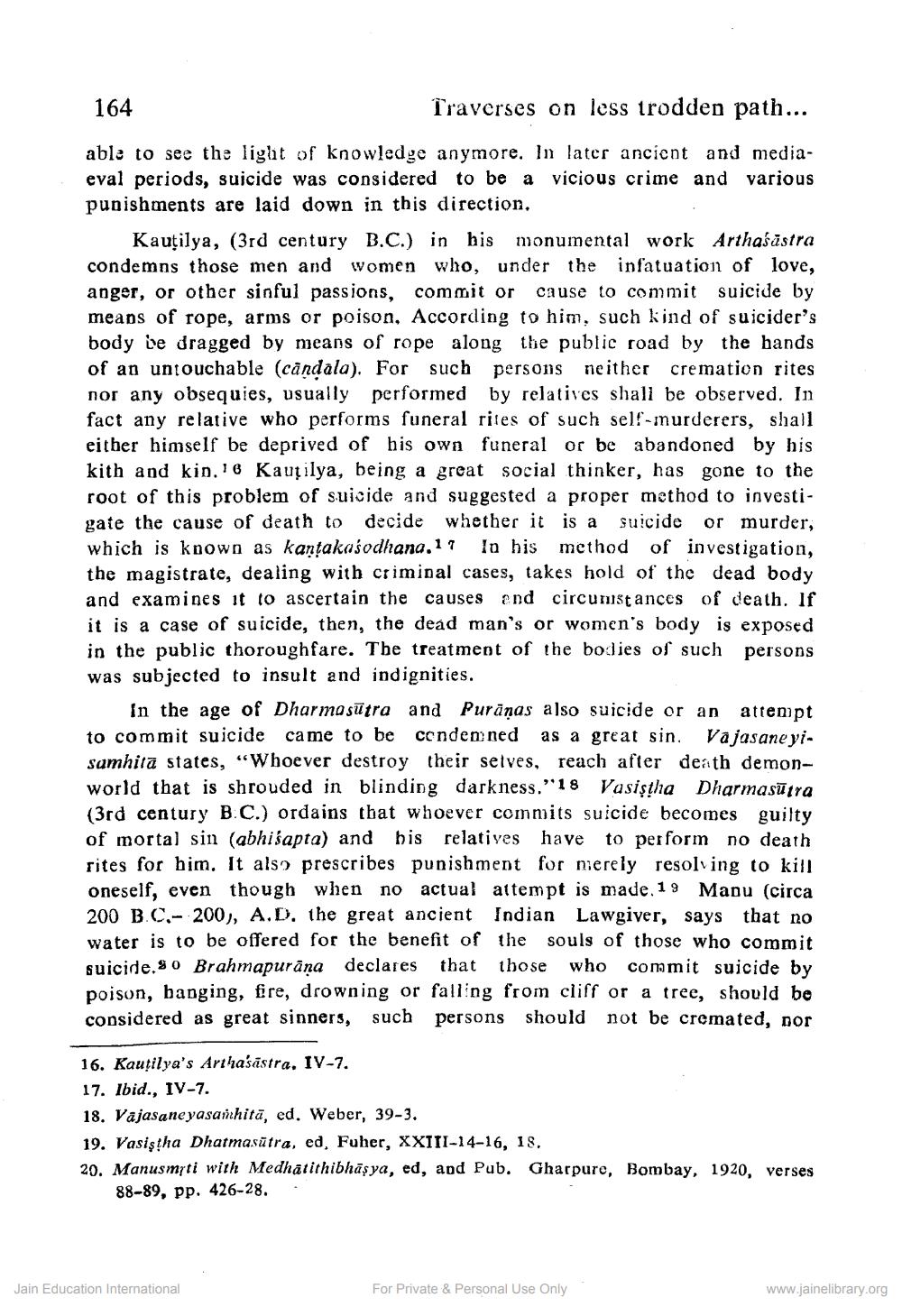________________
164
Traverses on less trodden path...
able to see the light of knowledge anymore. In later ancient and mediaeval periods, suicide was considered to be a vicious crime and various punishments are laid down in this direction.
Kautilya, (3rd century B.C.) in his monumental work Arthaśāstra condemns those men and women who, under the infatuation of love, anger, or other sinful passions, commit or cause to commit suicide by means of rope, arms or poison. According to him, such kind of suicider's body be dragged by means of rope along the public road by the hands of an untouchable (cândala). For such persons neither cremation rites nor any obsequies, usually performed by relatives shall be observed. In fact any relative who performs funeral rites of such self-murderers, shall either himself be deprived of his own funeral or be abandoned by his kith and kin. 16 Kautilya, being a great social thinker, has gone to the root of this problem of suicide and suggested a proper method to investigate the cause of death to decide whether it is a suicide or murder, which is known as kantakasodhana. 17 In his method of investigation, the magistrate, dealing with criminal cases, takes hold of the dead body and examines it to ascertain the causes and circumstances of death. If it is a case of suicide, then, the dead man's or women's body is exposed in the public thoroughfare. The treatment of the bodies of such persons was subjected to insult and indignities.
in the age of Dharmosūtra and Purānas also suicide or an attempt to commit suicide came to be condemned as a great sin. Vajasane yi. samhita states, “Whoever destroy their selves, reach after death demonworld that is shrouded in blinding darkness."18 Vasiştha Dharmasutra (3rd century B.C.) ordains that whoever commits suicide becomes guilty of mortal sin (abhisapta) and his relatives have to perform no death rites for him. It also prescribes punishment for merely resolving to kill oneself, even though when no actual attempt is made. 19 Manu (circa 200 B.C.- 200), A.D. the great ancient Indian Lawgiver, says that no water is to be offered for the benefit of the souls of those who commit suicide.80 Brahmapurāna declares that those who commit suicide by poison, banging, fire, drowning or falling from cliff or a tree, should be considered as great sinners, such persons should not be cremated, nor
16. Kautilya's Arthaśāstra, IV-7. 17. Ibid., IV-7. 18. Vajasane yasanhitā, ed. Weber, 39-3. 19. Vasistha Dharmasūtra, ed. Fuher, XXIII-14-16, 18, 20. Manusmrti with Medhatithibhāsya, ed, and Pub. Gharpure, Bombay, 1920, verses
88-89, pp. 426-28. .
Jain Education International
For Private & Personal Use Only
www.jainelibrary.org




